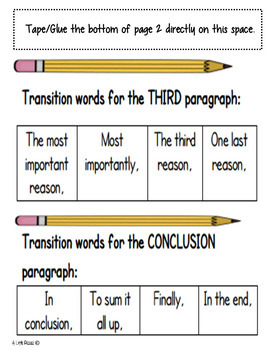

This article explores how to use speech transitions in presentations. This can be done using speech transitions because these act as signposts to the audience - signalling the relationship between points and ideas.

When delivering presentations it's important for your words and ideas to flow so your audience can understand how everything links together and why it's all relevant. You should use signposts often and with each connector in your speech.Speech transitions: words and phrases to connect your ideas “In addition to a large undergraduate student population, we also have many graduate students.” SignpostsĪ signpost is simply a word or phrase that indicates order, sequence, or time passing, such as first, next, and finally or a shift in ideas, such as in addition or furthermore. They do not necessarily need to summarize the previous subpoint, but they do need to indicate that you are moving on to the next subpoint. Internal Transitions: Your speech will likely have many internal transitions within each main point. “With a clear picture of our campus, let’s now turn to the students.” They restate the main point that was just finished and introduce the next main point. Summary Transitions: These transitions occur only between main points. Transitions work like a lubricant, to smoothly flow from one idea to the next. Without transitions, the speech will sound choppy and leave the audience wondering where they are in the speech. “Now that we have explored the locations, colleges, and student gathering places, we have a better understanding of our campus.” TransitionsĪ transition that connects one idea to the next. Note, an internal review may be unnecessary for speeches that are 10 minutes or shorter. To keep the internal review simple, succinct, and easy to recall, do not include extraneous details or sub-subpoints in the review. It is a review of the subpoints to that main point in the order that they were presented. Internal Review: These reviews occur at the end of each main point. “Today, we have explored the campus, turned to the students, and learned about the faculty.” To keep the main review simple, succinct, and easy to recall, do not include extraneous details or subpoints in the main preview. It is a review of the main points of the speech in the order they were presented. Main Review: The main review comes just once at the beginning of your conclusion. It often uses the same language and names for each point as the corresponding preview does as well as listing the major topics.

“As we explore the campus, we’ll first cover the locations, next the colleges, and finally student gathering places.” Reviews/SummariesĪ review, or summary, reminds the audience of the major topics that were just covered in your speech, serving the “tell them what you’ve said” function of connectors. To keep the internal preview simple, succinct, and easy to recall, do not include extraneous details or sub-subpoints in the preview. It is a preview of the subpoints to that main point in the order that they will be presented. Internal Preview: These previews occur at the beginning of each main point. “To better appreciate the prestigious legacy of our college, we will first explore the campus, then turn to the students, and finally, learn about the faculty.” To keep the main preview simple, succinct, and easy to recall, do not include extraneous details or subpoints in the main preview. It is a preview of the main points of the speech in the order that they will be presented. Main Preview: The main preview comes just once at the end of your introduction. In your speech, you will have a main preview in your introduction as well as internal previews in each main point.

Like a table of contents, the preview should not contain any extraneous information, summaries, or details that will be covered within each major topic. To illustrate each connector in action, let’s take a rough sample outline of an informative speech about your college or university:Ī preview provides a road map for what’s to come, much like a table of contents, serving the “tell them what you are going to say” function of connectors.


 0 kommentar(er)
0 kommentar(er)
